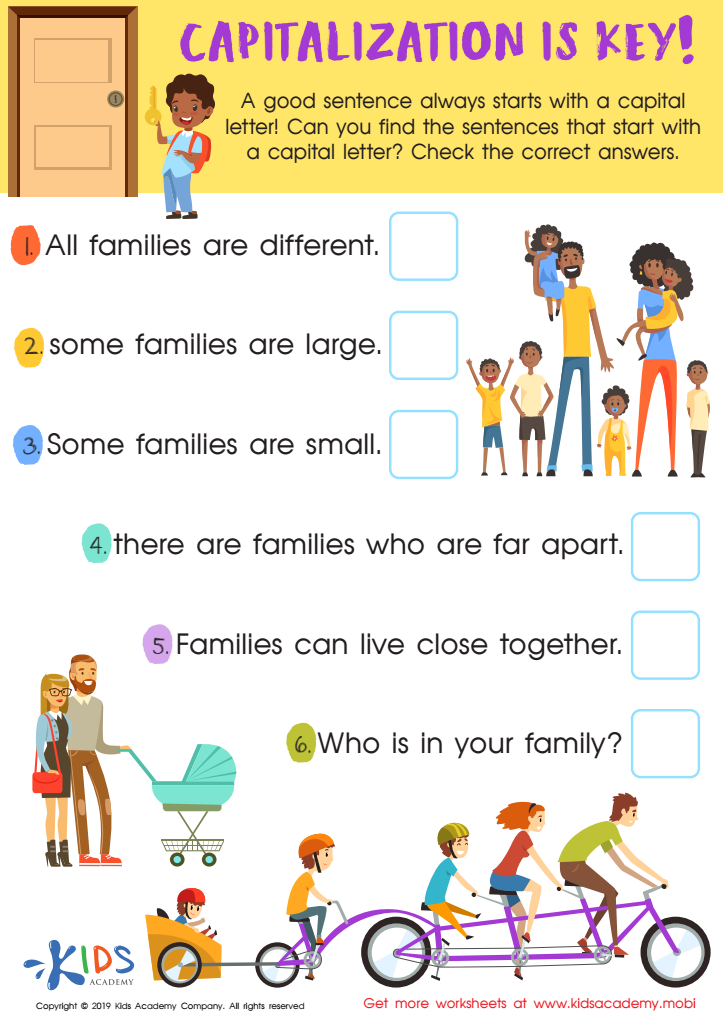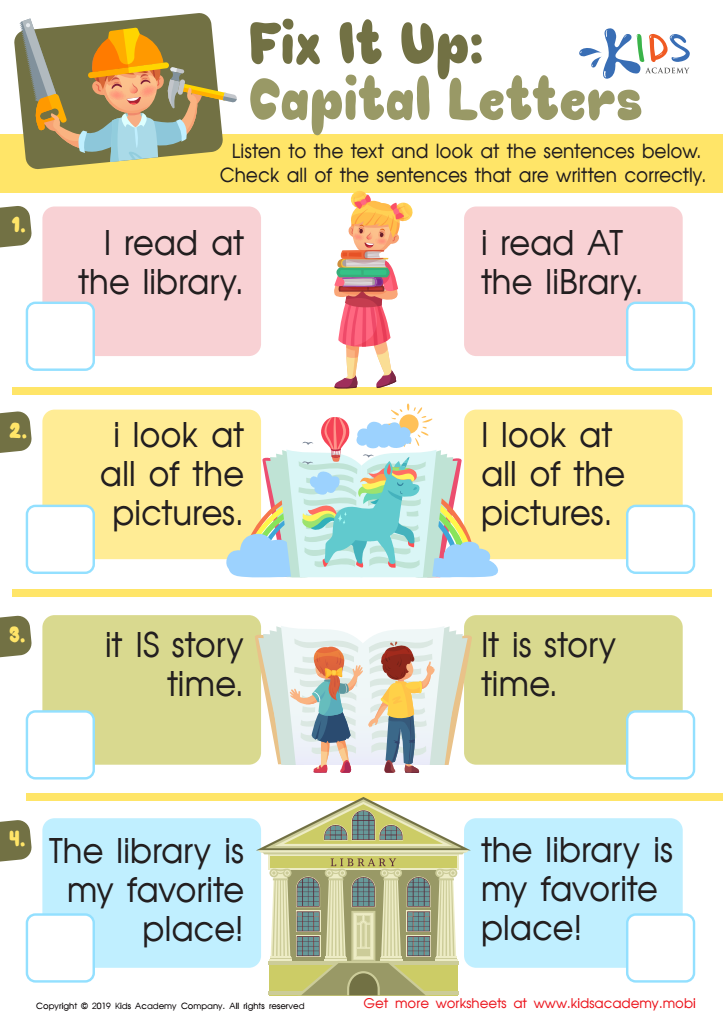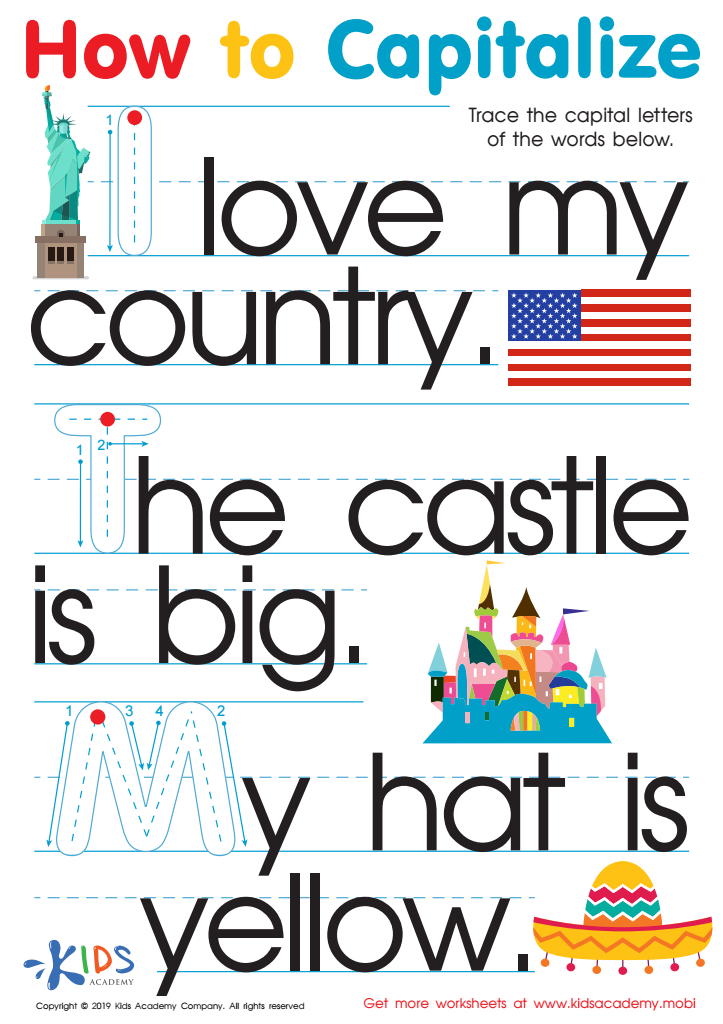Capitalization rules Worksheets for Ages 4-5
4 filtered results
-
From - To
Introducing our "Capitalization Rules Worksheets for Ages 4-5" – the perfect tool to build a foundational understanding of capitalization in young learners! These engaging worksheets are designed with fun activities and colorful illustrations to capture the interest of preschoolers and kindergarteners. Children will learn crucial skills such as capitalizing the first letter of sentences and the pronoun 'I'. Each worksheet boosts confidence and reinforces learning through repetitive exercises and interactive tasks. Equip your little one for a successful start in literacy with our expertly crafted resources that make learning capitalization enjoyable and effective!


Capitalization. Punctuation. Spelling. Assessment 3 Worksheet


Capitalization Key Worksheet


Fix Capital Letters Worksheet


How to Capitalize Worksheet
Parents and teachers should care about teaching capitalization rules to children ages 4-5 because it forms the foundation for effective communication and literacy skills. At this young age, kids are highly receptive and begin to recognize patterns in language. Introducing capitalization early encourages them to understand and apply grammar rules as they learn to read and write.
Teaching the simple rules of capitalization—like capitalizing the first letter of a sentence, proper nouns, days of the week, and the word "I"—helps kids to write more clearly and read more fluently. When children understand capitalization, they can better recognize sentences and important words, making it easier for them to grasp meaning in stories and instructions.
Additionally, instilling proper capitalization habits early on helps prevent the development of bad writing practices that can become harder to correct later. It also boosts children’s confidence in their writing abilities, which in turn encourages their overall academic growth. When parents and teachers emphasize proper use of capitalization, they signal the importance of adhering to writing conventions and thereby set the stage for future success in both academic and real-world contexts. Prioritizing these skills early on helps create attentive, capable, and prepared learners.

 Assign to the classroom
Assign to the classroom











